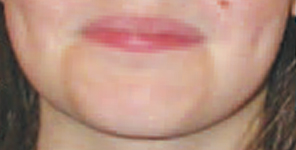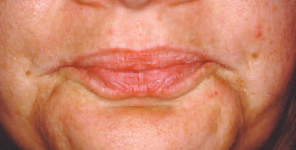Facial Muscle Dysfunction

Facial muscle dysfunctions (parafunctions) include lips open at rest, use of facial muscles to stabilize the mandible during swallowing, mannerism (puckering, pressing, shifting), excessive muscle tension, tension of the neck muscles, wrinkling of forehead, periocular muscles and furrowing of facial muscles. Usually accompany a tongue thrust swallow.
OMT
HELPS

OMT provides self awareness, behavioral modification techniques, relaxation techniques and optimization of chewing, swallowing, rest posture of lips, tongue and jaw to significantly reduce and eliminate facial parafunctions.
IF NOT
TREATED

Frequency, duration and intensity of facial muscle dysfunctions or parafunctions will be the deciding factors in developing facial and TMJ pain, malocclusion, swallowing discomfort, shoulder and neck pain or voice changes due to involvement of the neck and shoulder muscles. Tongue thrust, saliva pooling, dental plaque, drooling, facial wrinkles are also possible outcomes.

10. Facial Muscle Dysfunction
–de Siqueira SR, Teixeira MJ, de Siqueira JT. Orofacial pain and sensory characteristics of chronic patients compared with controls. Oral Surg Oral Med Oral Pathol Oral Radiol. 2013 Jun;115(6):e37-45. doi: 10.1016/j.oooo.2013.02.014. Epub 2013 May 1.
–Chaves TC, Nagamine HM, de Sousa LM, de Oliveira AS, Regalo SC, Grossi DB. Di erences in pain perception in children reporting joint and orofacial muscle pain. J Clin Pediatr Dent. 2013 Spring;37(3):321-7.